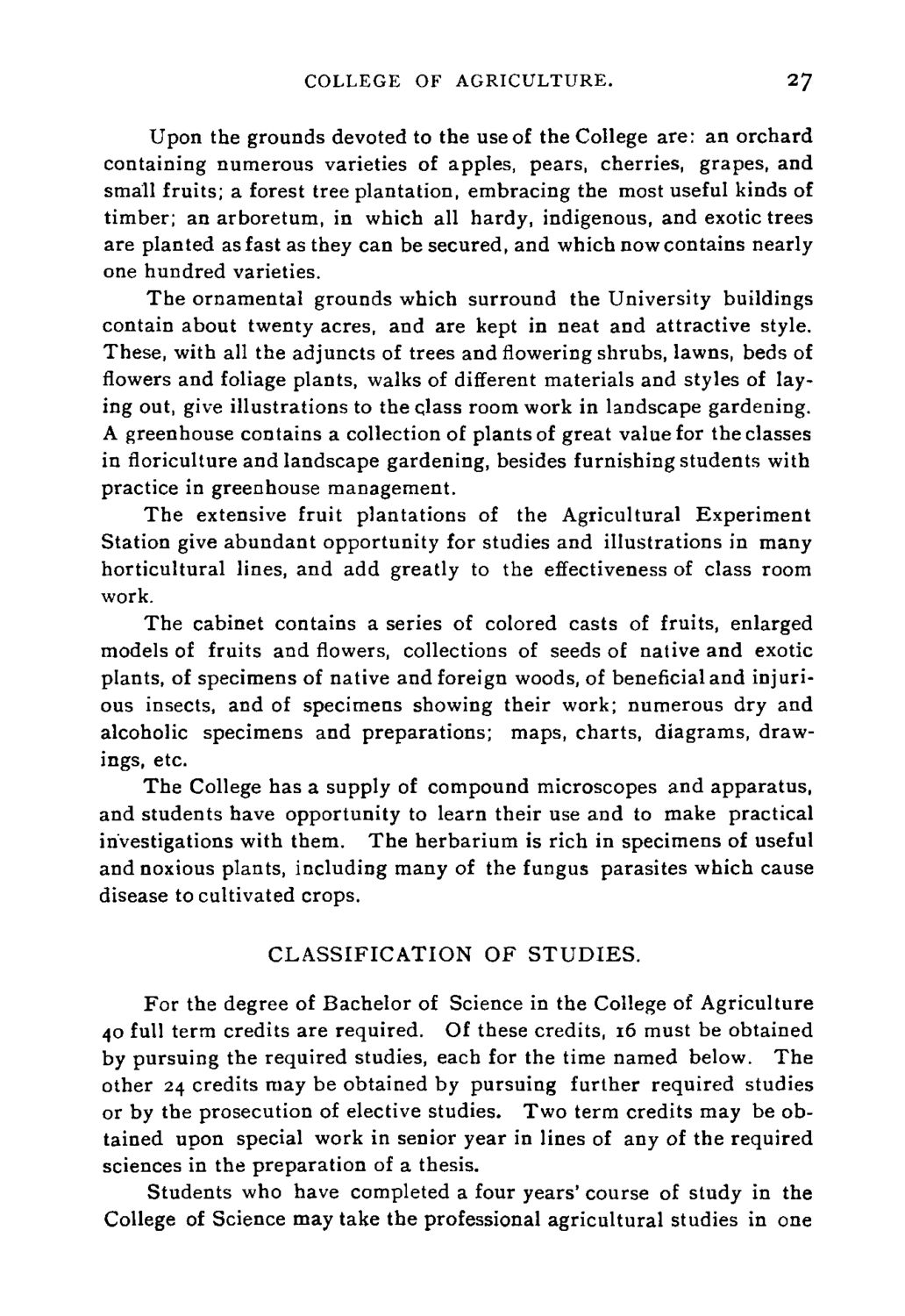| |
| |
Caption: Course Catalog - 1893-1894
This is a reduced-resolution page image for fast online browsing.

EXTRACTED TEXT FROM PAGE:
COLLEGE OF AGRICULTURE. 27 Upon the grounds devoted to the use of the College are: an orchard containing numerous varieties of apples, pears, cherries, grapes, and small fruits; a forest tree plantation, embracing the most useful kinds of timber; an arboretum, in which all hardy, indigenous, and exotic trees are planted as fast as they can be secured, and which now contains nearly one hundred varieties. The ornamental grounds which surround the University buildings contain about twenty acres, and are kept in neat and attractive style. These, with all the adjuncts of trees andfloweringshrubs, lawns, beds of flowers and foliage plants, walks of different materials and styles of laying out, give illustrations to the class room work in landscape gardening. A greenhouse contains a collection of plants of great value for the classes in floriculture and landscape gardening, besides furnishing students with practice in greenhouse management. The extensive fruit plantations of the Agricultural Experiment Station give abundant opportunity for studies and illustrations in many horticultural lines, and add greatly to the effectiveness of class room work. The cabinet contains a series of colored casts of fruits, enlarged models of fruits and flowers, collections of seeds of native and exotic plants, of specimens of native and foreign woods, of beneficial and injurious insects, and of specimens showing their work; numerous dry and alcoholic specimens and preparations; maps, charts, diagrams, drawings, etc. The College has a supply of compound microscopes and apparatus, and students have opportunity to learn their use and to make practical investigations with them. The herbarium is rich in specimens of useful and noxious plants, including many of the fungus parasites which cause disease to cultivated crops. CLASSIFICATION OF STUDIES. For the degree of Bachelor of Science in the College of Agriculture 40 full term credits are required. Of these credits, 16 must be obtained by pursuing the required studies, each for the time named below. The other 24 credits may be obtained by pursuing further required studies or by the prosecution of elective studies. Two term credits may be obtained upon special work in senior year in lines of any of the required sciences in the preparation of a thesis. Students who have completed a four years' course of study in the College of Science may take the professional agricultural studies in one
| |